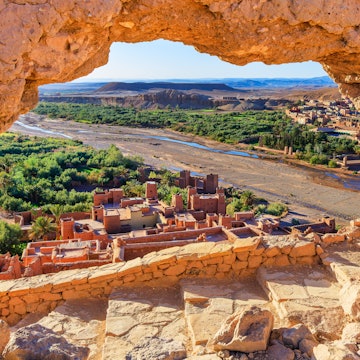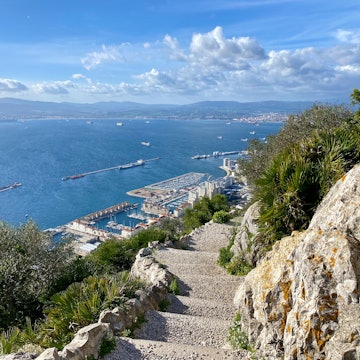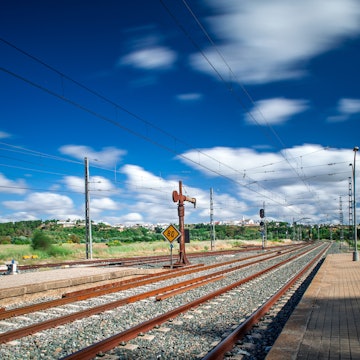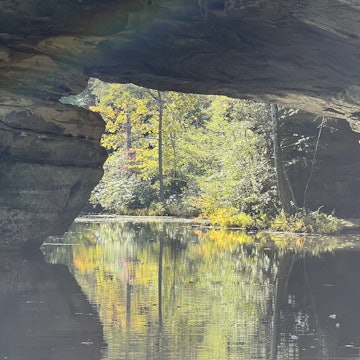

Praza do Obradoiro in Santiago de Compostela, where pilgrims end their Camino journey. James Jackman for Lonely Planet
Upwards of 400,000 travelers a year journey the yellow arrows and scallop-shell markers along the Camino de Santiago.
The historic pilgrimage routes lead to the city of Santiago de Compostela, Spain, home to one of Christianity’s holiest sites: the tomb believed to hold the remains of St James the Apostle (called Santiago in Spanish) inside the city’s magnificent cathedral.
Numbers on the caminos have multiplied tenfold since the late 1990s, and many walkers are seeking out less frequented alternatives to the classic Camino Francés. There are options long and short, hard and easy, to suit every pair of feet. The paths will likely be more crowded than ever, so plan ahead with this handy guide to the most popular Camino de Santiago routes and choose the right one for you.

Camino Francés
The classic: long and extremely popular
The Camino Francés (French Way) is the route with the richest tradition, still followed by more people than all other caminos combined. It starts at St-Jean-Pied-de-Port on the French side of the Pyrenees and crosses about 770km/478 miles (around five weeks on foot) of northern Spain en route to Santiago de Compostela.
To many people, this is the Camino de Santiago, a time-honored penitential route and a demanding challenge requiring both mental and physical stamina. It passes through the vineyards of La Rioja, across the sparsely populated croplands of the meseta (Spain’s central plateau) and over 1300m-high (4265ft) hills into the rural greens of Galicia (Spain’s northwestern region, of which Santiago de Compostela is capital).

You traverse isolated stone-built villages and sizable cities like Pamplona, Burgos and León, many of them full of camino history, from ancient stone bridges to huge medieval cathedrals. The way can be blisteringly hot in summer and freezing cold in winter. Some stretches are rural tracks, while others run alongside busy, paved roads.
But only one person in five does the full distance from St-Jean-Pied-de-Port, so the bulk of this camino is less busy than you might imagine. In fact, nearly half of Camino Francés travelers begin at Sarria, just 114km (71 miles) before Santiago – a modest Galician town that just happens to be the last starting point that meets the minimum 100km (62 miles) requirement for obtaining the official Camino de Santiago certificate, the Compostela.

Camino Portugués
A route for everyone
The Portuguese Way, the second-busiest of the Caminos de Santiago, runs more than 600km (373 miles) from Lisbon in Portugal to Santiago (about 3½ weeks). But the most popular starting points are the enticing city of Porto in northern Portugal (some 240km/149 miles from Santiago, about 10 days) and Tui, where the route enters Spain (115km/71 miles). It’s within the capacity of any reasonably fit person, with few hills, though a lot of the walking is on hard surfaces (roads, pavements, cobbles), which can be tough on the feet.
The landscape gets greener as you proceed northward, and the camino is practicable year-round, though it’s preferable to avoid the heat of July and August on the southern half. A popular variant, starting from Porto, is the Camino Portugués de la Costa (Portuguese Coastal Way) running close to the beach-strung Atlantic coast.

Camino del Norte
Five weeks near Spain’s surprising north coast
Traveled by around 20,000 people a year, the Northern Way parallels Spain’s north coast for over 600km/373 miles from Irún on the French border to Ribadeo, then heads inland across Galicia to Santiago de Compostela. Many Norte walkers are looking for a less-traveled alternative to the Camino Francés. It’s similar in length but was used by far fewer pilgrims in medieval times, as is the case today.
While some sections run alongside beautiful beaches and plunging cliffs, the majority of the route travels inland: some days you won’t see the sea at all. You pass through large cities – San Sebastián, Bilbao, Santander, Gijón – as well as pretty coastal towns like Comillas, Ribadesella and Luarca. There are a few longish stretches of road walking. The hilly early stages across the Basque Country provide some of the most beautiful scenery.

Camino Primitivo
Two weeks of gorgeous green countryside; relatively tough
The Camino Primitivo (Original Way), some 320km/199 miles long, follows the footsteps of the first recorded pilgrimage to St James’ tomb, made by King Alfonso II of Asturias from Oviedo in the 820s.
It’s considered one of the tougher caminos because of the hilly terrain of its first eight or nine days (which can make it impracticable in the snowy winter months). But the ups and downs only enhance the beauty of the landscapes, and the route is manageable for any fit walker. Numbers on this camino are relatively light, just sufficient to provide good fellowship.
Once out of the hills, you reach the city of Lugo, encircled by 2.2km (1.4 miles) of wonderfully preserved Roman walls, and later join the Camino Francés for the final 55km (34 miles) to Santiago.

Camino Inglés
Short, relatively easy route within Galicia
The “English Way” runs about 115km/71 miles (five days) to Santiago from Ferrol in northern Galicia. It owes its name to medieval pilgrims from Britain, Ireland and other northern locations, who would sail to ports like Ferrol and then complete their journey to Santiago overland.
Practicable year-round, this is an obvious choice if you have limited time, and the Inglés’ popularity has mushroomed in the last decade, with around 15,000 walkers a year. It combines stretches along picturesque rías (coastal inlets) with sections across green countryside and through the medieval towns of Pontedeume and Betanzos. An alternative starting point is A Coruña, just two or three days’ walk from Santiago.

Camino de Muxía-Finisterre
On from Santiago to the “end of the earth”
This route runs not to Santiago but from it, to the small fishing ports of Fisterra (Finisterre) and Muxía on Galicia’s dramatic coast. Believe it or not, plenty of camino walkers don’t want to stop when they reach Santiago. Three or four additional days to Fisterra or Muxía (four to six days for both places) can be the perfect coda to your odyssey.
The name Fisterra/Finisterre means Land’s End: cliff-girt, lighthouse-capped Cabo Fisterra (Cape Finisterre) certainly has an end-of-the-earth feel. At Muxía, an 18th-century church on the rocky seashore marks a spot where the Virgin Mary is said to have appeared in a stone boat.
It’s about 86km (53 miles) from Santiago de Compostela to either Fisterra or Muxía across mostly gentle countryside, and a 28km (17-mile) stretch links the two places.
Other Caminos
The caminos mentioned here are just the most popular ones. There are dozens of other established routes from all over Spain, from Portugal, France and even beyond. Two excellent resources for finding out more are this Camino de Santiago forum and the blog Trepidatious Traveller by Maggie Woodward.
















